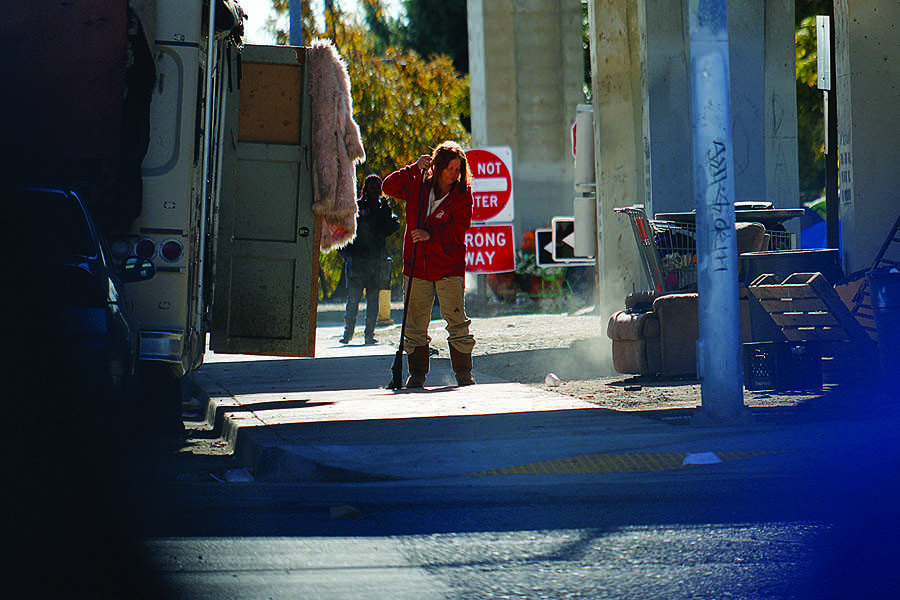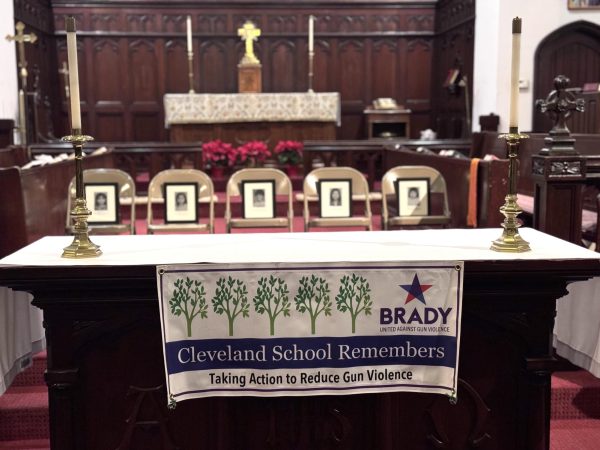OUT OF PLACE
Homeless population is difficult to ignore
TUCKED AWAY IN FISSURES OF THE CITY are the urban nomads of Stockton. Under freeways and on levees, they are part of the scenery that the public walks past. They are part of a background that is assumed to be desolate, savage even. Almost every person resorts to avoiding contact with the homeless. People without homes are still human, though. They are humans who have adapted to a different way of living.
Across from Stagg, among the peninsula and the river, drums are beaten vivaciously. Students may turn their head at the unseen origin of the noise with a sheepish curiosity. Living on those islands is a group of individuals who say they find it easier to live in isolation than in a conventional neighborhood.
Coming out of county jail, James was introduced to the island by a colleague. He has lived on the island for two years, saying, “It’s like camping forever.” Drum ruckus that reverberates in the air comes from him. He pulled those discarded drums out of the river himself. While speaking about his passion for music, he enunciated his admiration of the jazz studies teacher at Delta College.
College was something James’ grandparents told him to reject because “it isn’t good and full of drugs.” Yet James’ two children have graduated from California State University Long Beach and Santa Clara University. With a downcast look, he expresses his regret of not pursuing music despite his grandparents’ condemnation.
His wit and resourcefulness make one baffled as to why he is in the shape he is in. James has provided himself and five other dwellers on the island with solar power. Several rafts have been made with salvaged wood and plastic. At the time he was interviewed, he had just pulled an entire fiberglass rowboat out of the river. James has done all of this with two dislocated discs in his back.
One of the other occupants, Mary, explains how she straightens out the island by disposing of the litter produced by passersby. When asked about how they cope with the incoming winter weather, she said, “We wear maybe three or four layers of jeans and T-shirts.”
Her pitbull dog, Clyde, runs up to her side.
“Clyde will get under the covers and lay with me.” Then she laughs. “He’s a big baby. He’s got a little bit of fleas, but I don’t mind so long as he keeps me warm.”
Mary fears that the recent “homeless sweeps” being performed by the local police department will eventually reach the island. “Sweeps” manage the unsanitary and unsafe encampments that have spread around the city. Before the police inform the homeless occupants that they must vacate the premises, representatives from services such as mental health and county housing try to get people to accept help.
Many of them reject the offers.
Communication is a handicap for many unsheltered individuals. A recent report on the unsheltered homeless by the county reports that of the 541 individuals surveyed, 40 percent of them reported either mental illness, substance abuse, or both. Jon Mendelson, associate director at Central Valley Low Income Housing Corp, says that the population of the unsheltered is vastly underreported.
Mendelson says that there are several reasons why individuals refuse to live in the city’s homeless shelter, one of them being inconvenience. People have to physically wait in line every morning in order to secure a spot, yet even that is not a guarantee. The shelter has a communal atmosphere that is also a deterrent for many individuals.
Serenity Hudson, a sophomore, recalls the uneasy feeling she felt being surrounded by strangers at the shelter. “There was one closed door between us and just complete strangers,” Hudson recalls. “It was pretty scary to stay with people I didn’t know.” She and her mother would huddle in the same bunk to preserve warmth.
“Everyone really doesn’t give Stockton what it deserves,” Hudson said. Although she withstood a turbulent time at a young age, the shelter was a dependable resource for her family.
Despite her situation, she was still able to go to school through the Transitional Learning Center located Downtown. When Hudson and her family needed food, St. Mary’s Dining Hall made sure they were fed.
All of the funding for these social programs derives strictly from state and federal grants. Due to the property bubble and the following recession, donations are at an all-time low. According to the Center
on Budget and Policy Priorities, $3 trillion will be cut from federal social welfare programs in the next decade. Recently, Mayor Anthony Silva proposed creating several warehouses to act as homeless shelters.










